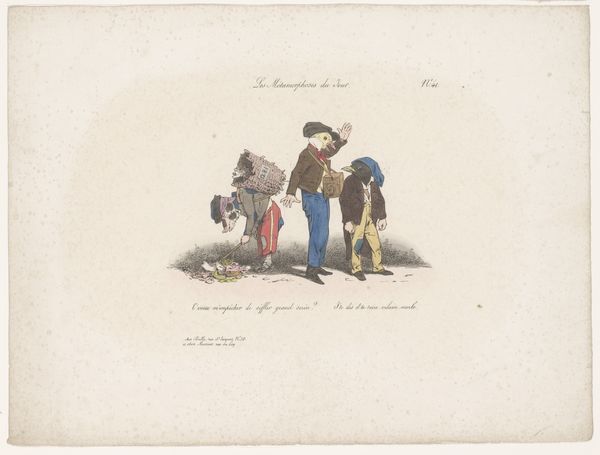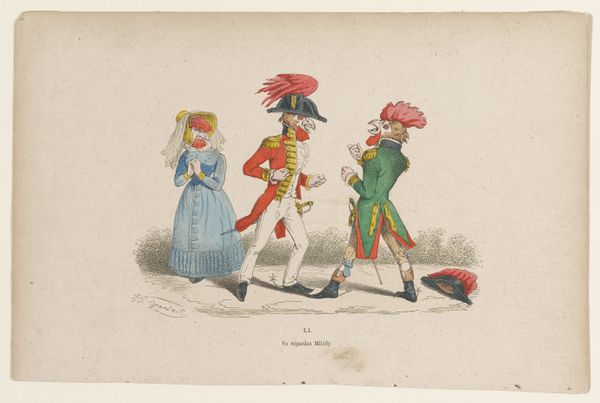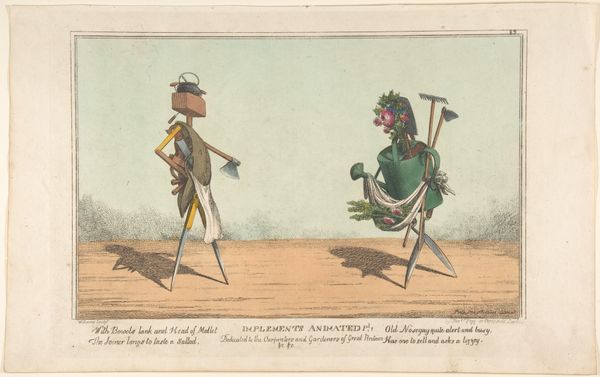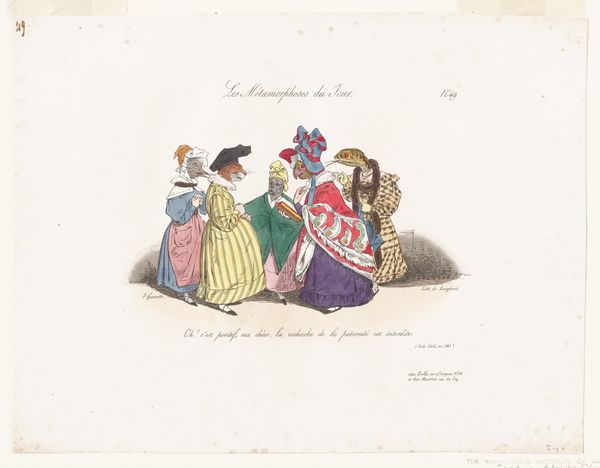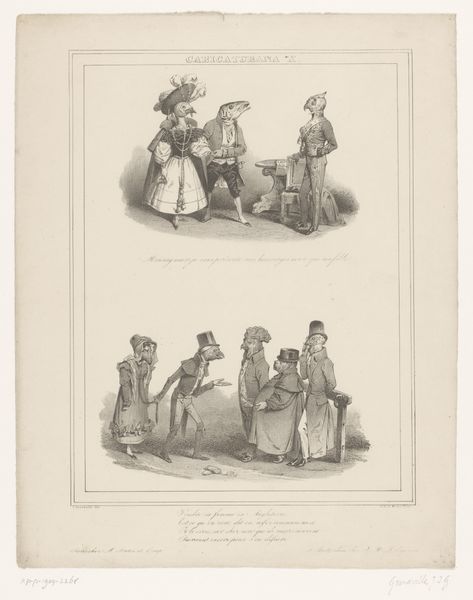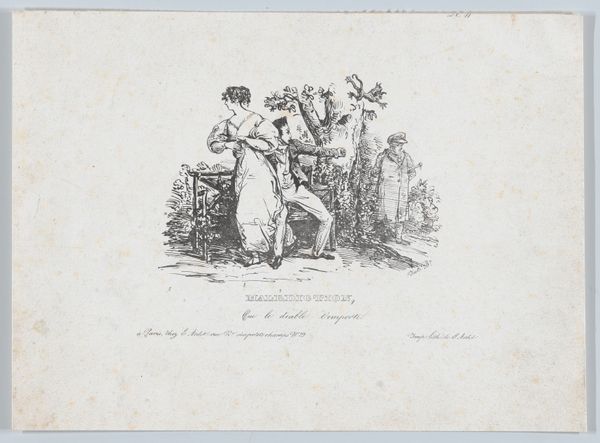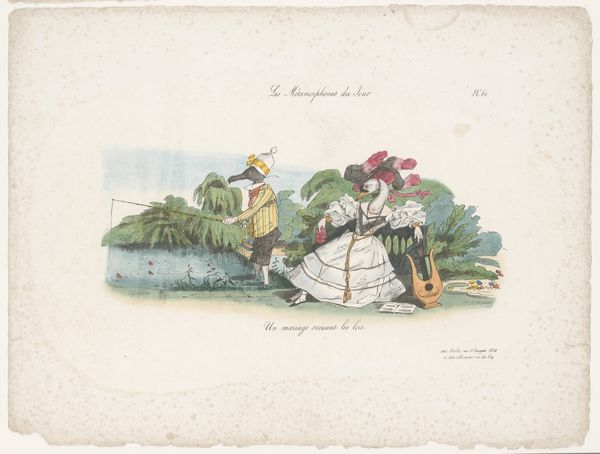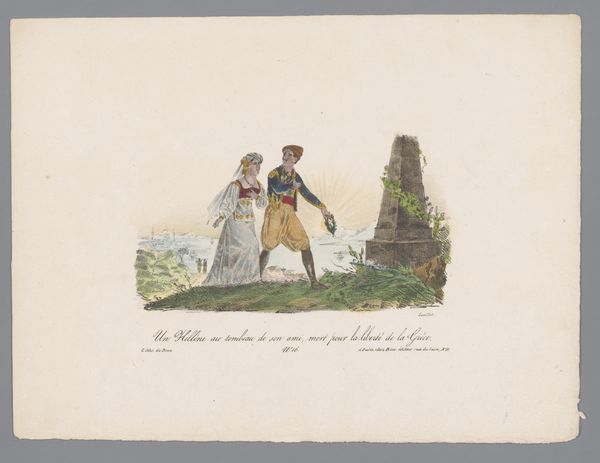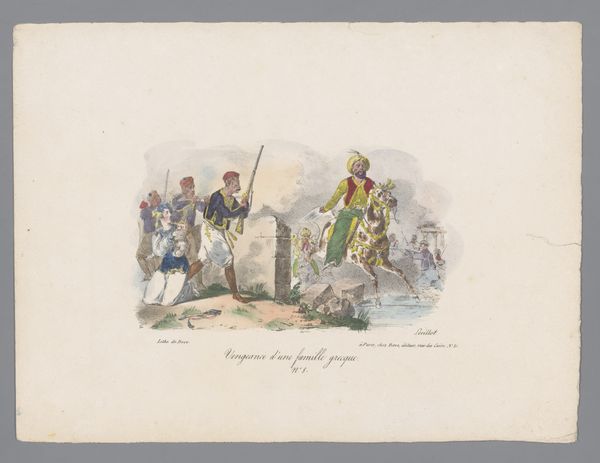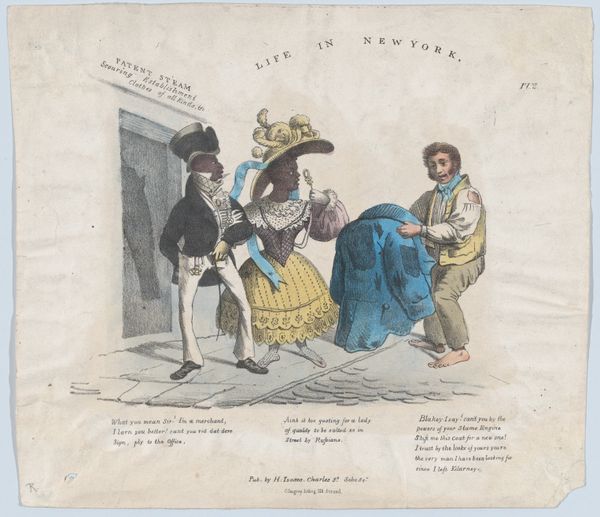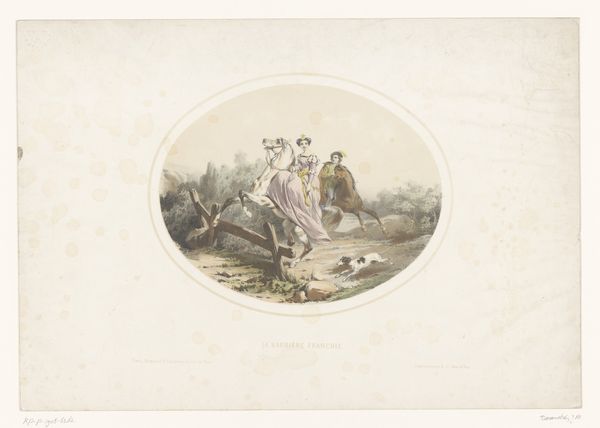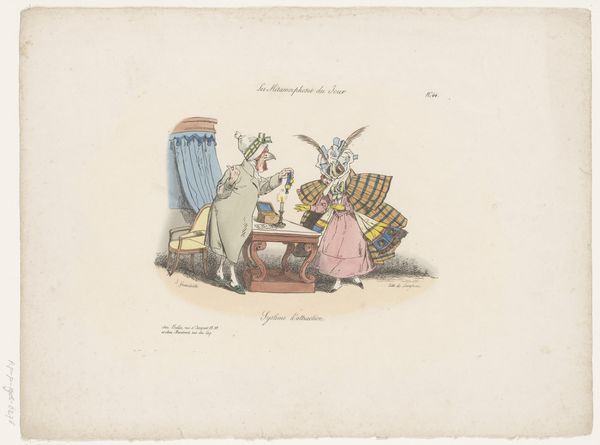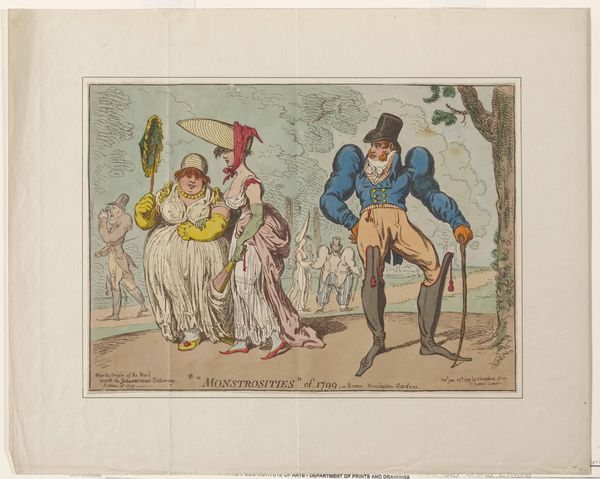
drawing, print, watercolor
#
drawing
# print
#
caricature
#
figuration
#
watercolor
#
romanticism
#
watercolour illustration
#
genre-painting
#
watercolor
Dimensions: height 270 mm, width 360 mm
Copyright: Rijks Museum: Open Domain
Editor: This watercolor print, "Twee hanen maken ruzie over een hen," which translates to "Two roosters fighting over a hen" by Jean Ignace Isidore Gérard Grandville from 1829 is wonderfully absurd. I'm immediately drawn to the anthropomorphic figures—men with rooster heads dressed in period clothing. It has a slightly mocking feel to it. What do you see in this piece, considering its time? Curator: It's intriguing, isn't it? Grandville was a master of political and social satire. The French Restoration period, in which this print was made, was characterized by a longing for the old order after the Napoleonic era, yet simmered with political tension. These rooster-headed figures in military attire, bickering over a hen, serve as a commentary on the vain, power-hungry aristocracy of the time. Who is really benefiting in such squabbles? Editor: So, the roosters aren't just roosters; they're stand-ins for something bigger? Curator: Exactly. Look at their puffed-up chests, the extravagant uniforms, and the almost theatrical posturing. It's a visual jab at the ego and inflated sense of self-importance often associated with the ruling class. And the hen, often overlooked, may represents an individual or collective subjected to aristocratic power games. How do you think it was received back then? Editor: Probably with mixed reactions, right? Those in power might have felt insulted, while others found it humorous. Were there any repercussions for Grandville expressing his views so openly? Curator: That's the crucial tension: caricature flourished in the era, because there were always conflicting interpretations as to the "message." It circulated and was received across the political landscape as social commentary in the public sphere, reflecting on social and institutional events. The true nature of public sentiment could be ambiguous, depending on one's placement in social hierarchies and classes. Do you think these tensions affect art in our present day? Editor: It's wild to consider this commentary's complexity, its message changing for different audiences! Nowadays it is way easier to have different conversations than what was allowed for the public sphere back then! Curator: Precisely, it offers insight into how artists engaged with their social and political environments, using satire as a potent tool. Editor: That's a fantastic observation! I'll never look at political cartoons the same way again. Thank you.
Comments
No comments
Be the first to comment and join the conversation on the ultimate creative platform.
